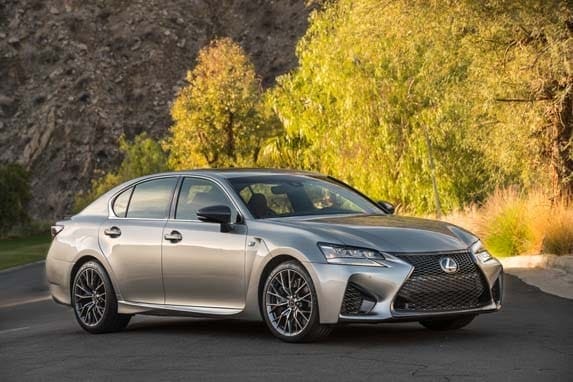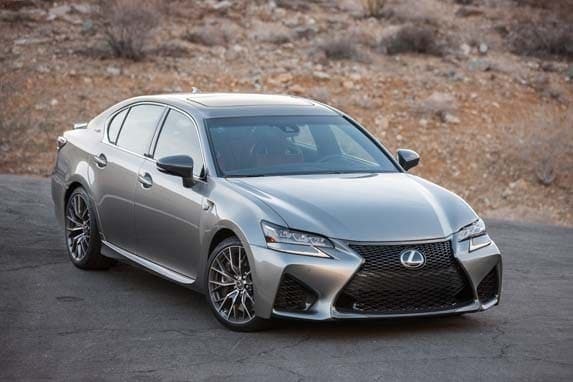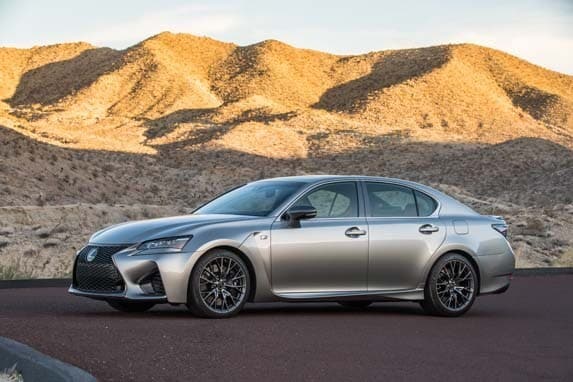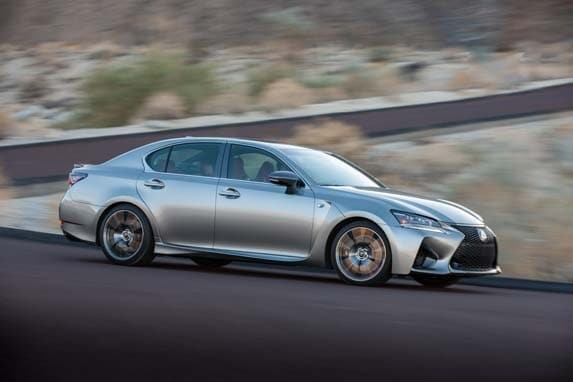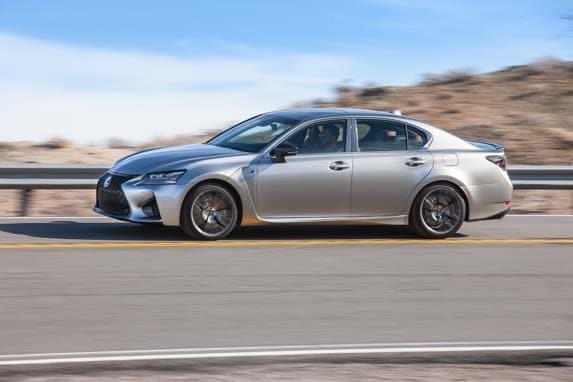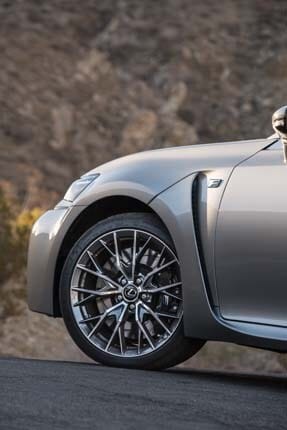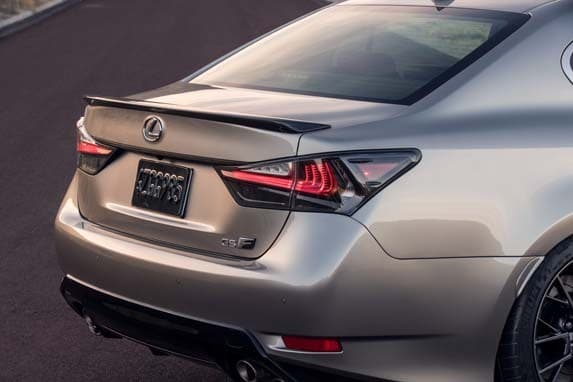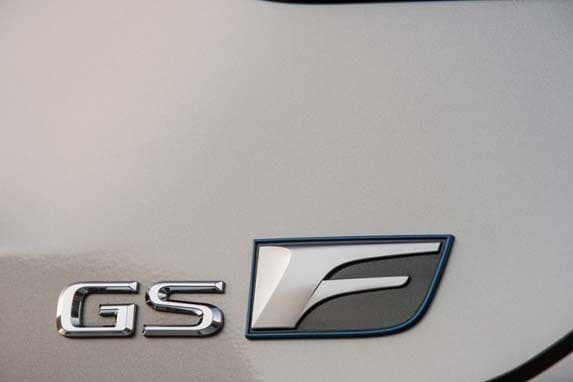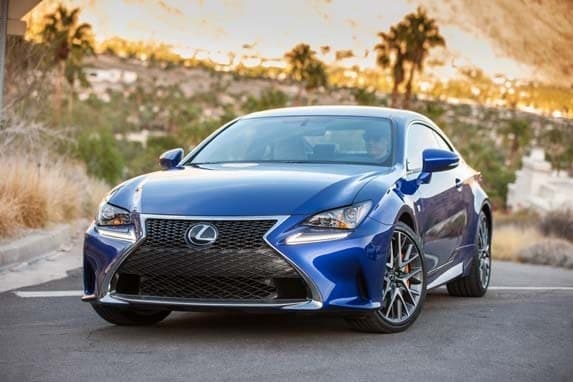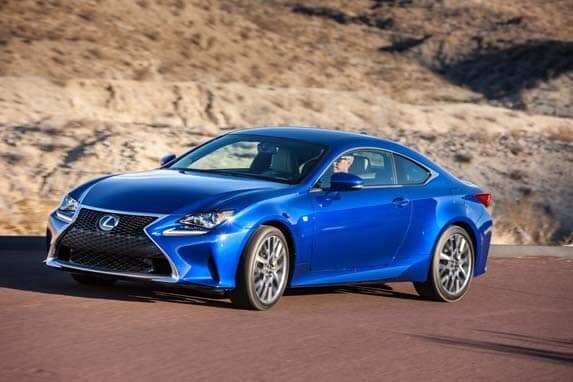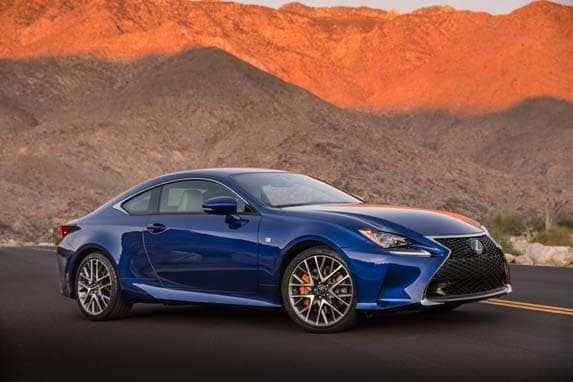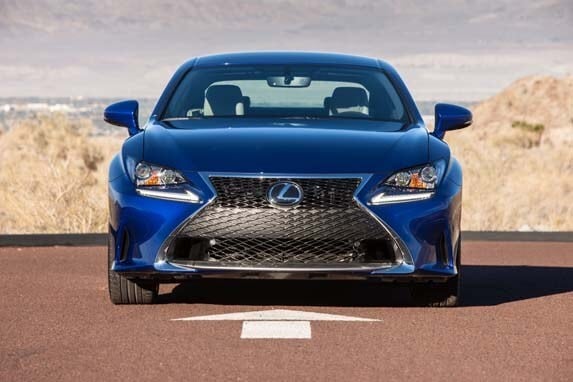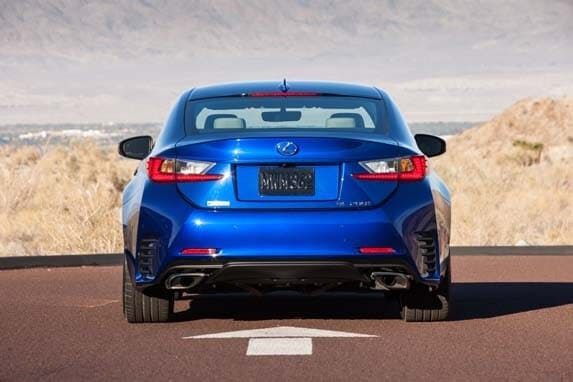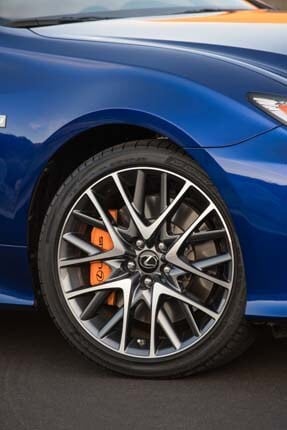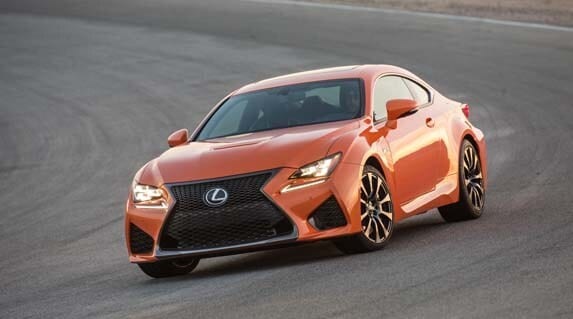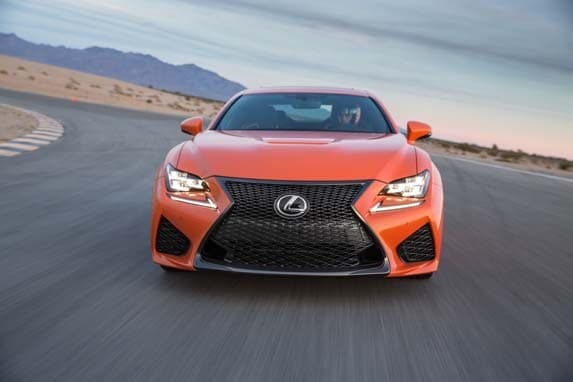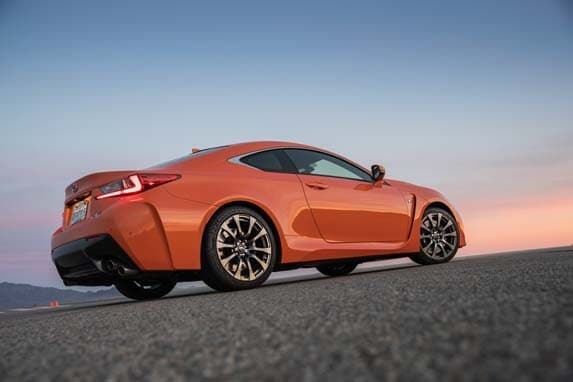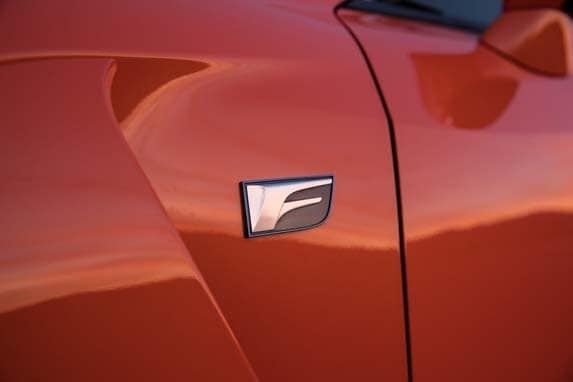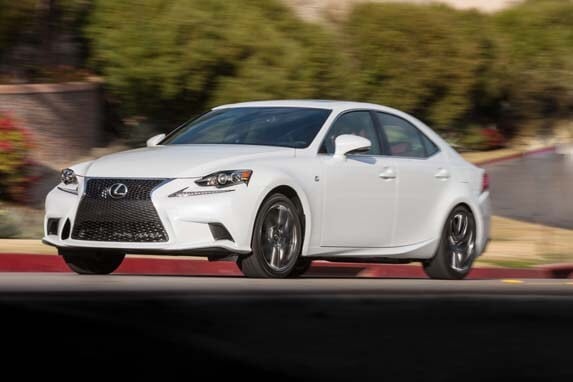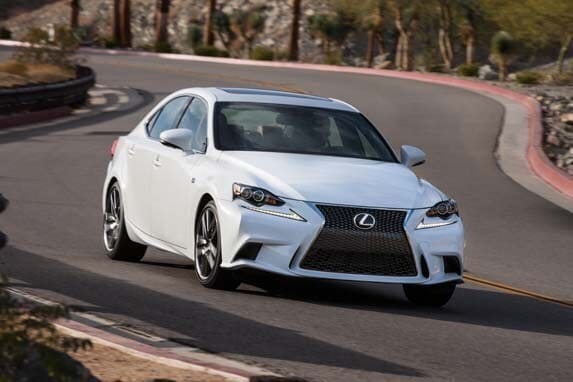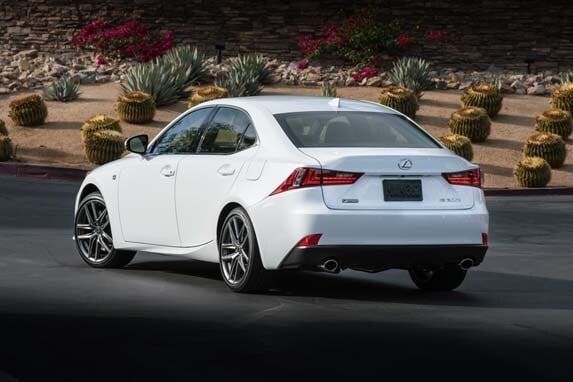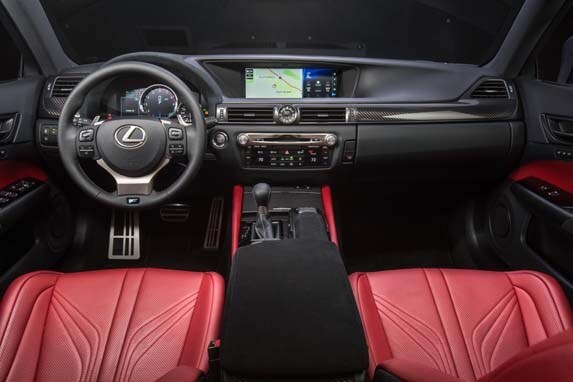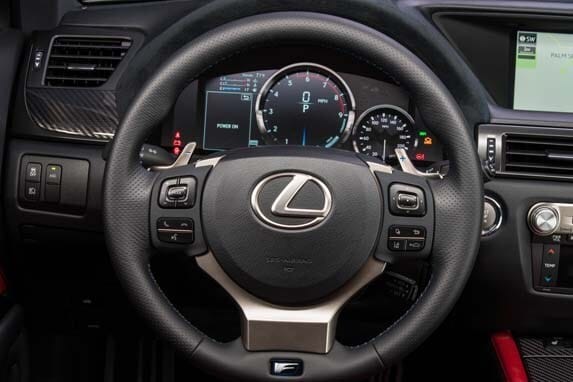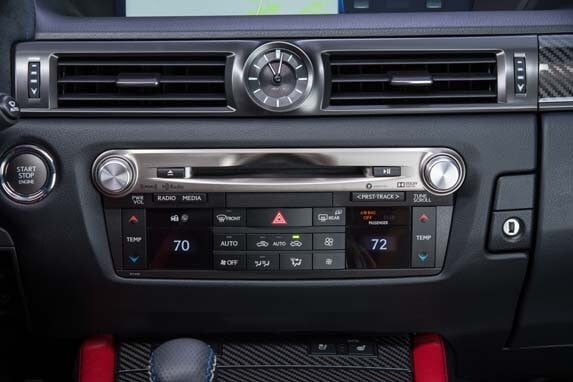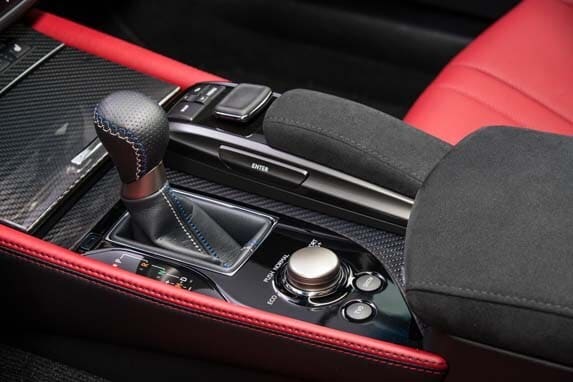In the 25 years that Lexus has been on the U.S. market, it has found success in catering to the more traditional domestic luxury car market that prized a quiet comfortable ride over outright performance. By building cars with bulletproof quality, it won over a segment dominated by American giants Cadillac and Lincoln. But even that traditional market has limits and Lexus is in the process of remaking itself, looking for the sort of styling edge that Cadillac is pursuing, while focusing on the performance attributes of the new luxury car royalty, German makes like Mercedes-Benz, BMW and Audi.
While not necessarily abandoning its traditional base, Lexus is focused on winning over younger consumers who value style, technology and of course, performance. In addition to introducing styling that’s more in-your-face exemplified by its larger, spindle-shaped grille, Lexus is also infusing all of its product with more performance-oriented models and trim packages in an effort to back up its cutting edge look with vehicles that deliver a spirited drive.
The Philosophy of F
Lexus has built its new F and F Sport products as part of a program that not only connects with the very origins of the company (the original LS 400 sedan was codenamed F1 for Flagship 1), but also with the legendary Fuji Speedway in Japan, which has become the home of the development center for all F-branded products.
Beyond its origin, F and F Sport products are expected by Lexus to deliver three fundamental elements: Sound, Response and Limitless Power Feel. While it’s a given that dedicated F models like the RC F and GS F are designed to deliver on all three, Lexus has also tailored its optional F Sport packages offered across the line on vehicles ranging from the compact NX crossover SUV up through the flagship LS sedan, to deliver satisfying engine note through specific exhaust systems and better response with the addition of Sport and Sport + modes and performance suspension tuning.
RC F and GS F
The heart and soul of the Lexus F effort lie in the 2016 RC F coupe and GS F sedan. Both share the same 5.0-liter V8 engine, which produces 467 horsepower and 389 lb.-ft. of torque. In both the coupe and sedan, the engine is capable of sub-5 second 0-60 mph acceleration and delivers the power seamlessly to the rear axle through an 8-speed automatic transmission. Newly introduced on the GS F as standard equipment and available as an option on the RC F is the torque vectoring rear differential (TVD) that sends torque to the right or left side depending on available traction. This ability enable the car to not only correct for under- and oversteer, but also helps the car get off the corner quicker.
The RC F and GS F also are equipped with a selectable driver mode that has settings for Sport, Sport + and Track, as well as slalom and track settings for the TVD. This allows the driver to match throttle response, suspension and steering settings and shift strategies to match the driving conditions. During lapping sessions out at the Chuckwalla Raceway in Desert Center, California, both the GS F and RC F in track mode seemed to be able to sense the road ahead and would automatically select a lower gear and hold it through a corner more efficiently than I could using the manual paddle shifters. While both the GS F and RC F were more than capable on the track, the shorter wheelbase coupe seemed a bit more willing to turn in quicker than the larger sedan. The performance of either will more than satisfy the vast majority of enthusiast-oriented drivers, the question is whether you need the rear doors and larger cabin of the GS.
F Sport
Not as hard core as the full-on F models, the F Sport trim level available on the entire Lexus car lineup except for ES and on the NX and RX crossovers, provides a way to add a bit more sporting edge inside and out. Thanks to different wheels and tires, a more aggressive sound exhaust, bolstered sport seats, a racing-inspired flat bottom steering wheel, tuned suspension and selectable drive modes, the F Sport models, especially in the GS and RC ranges, are step-up performance alternatives that are fully competitive with the AMG-Sport versions at Mercedes as well as S Line offerings from Audi. As with the German makes, these sportier versions leave the basic engine package intact of the standard models, but concentrate on the appearance, seating and handling to up their performance appeal.
The exterior of these models are distinguished by a unique mesh spindle grille, rear spoiler, alloy wheels and badging and colors specific to F Sport models. Inside, the instrumentation is exclusive to the package along with trim elements that include perforated leather on the steering wheel and shift knob, as well as aluminum trim on the center console, scuff plates and pedals. The seats are also tailored to the package with 16-way adjustment on the driver’s side along with power bolsters.
The F Sport models have tuned suspensions and an adaptive setup is optional. All models have modes for Eco, Sport S and Sport +, as well as a custom setting that allows the driver to pick steering, suspension and throttle response from any of the three modes to create specific tuning.
The Price is Right
The expansion of the F Sport lineup provides a bridge from not only a performance perspective, but from pricing standpoint. At the top of the performance line, the RC F and GS F command base stickers of $62,805 and $84,440, respectively. F Sport models of the RC run from $44,100 for the turbo 4-cylinder RC 200t to $48,715 for the AWD RC F Sport. The GS 200t starts at $53,285 and tops out at $68,125 for the hybrid GS 450h.
In the IS lineup, the all-new IS 200t starts at $40,870 and runs to $45,750 for the IS 350 AWD. RX models with the F Sport treatment range from $49,125 to $57,045 while the NX 200t starts at $37,065. The CT 200h, Lexus’ compact hybrid hatchback is $32,980 in F Sport trim. And the LS flagship offers both rear- and all-wheel drive F Sport packages priced at a respective $82,500 and $85,415. The premium commanded by the F Sport package can be as little as $1,700 in the CT to as much as $10,000 in LS. No matter the model, if you’re looking for a little more edge in your luxury ride, the F Sport option is definitely worth a test drive.
POPULAR AT KBB.COM
